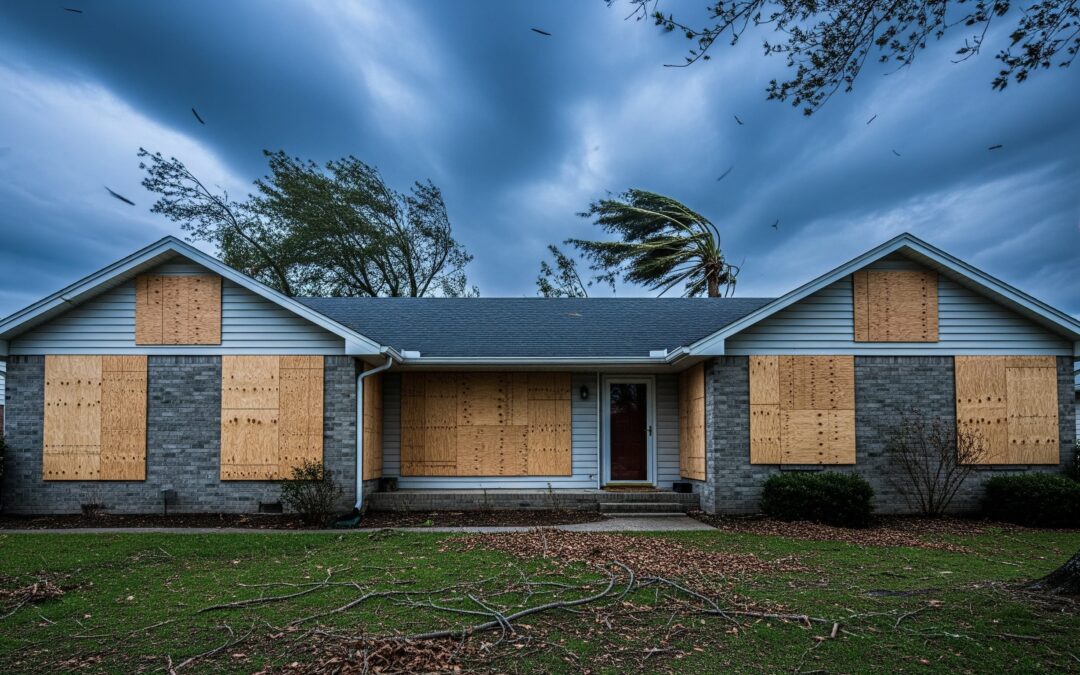As hurricane season approaches, securing your home becomes a top priority. While professional shutters and impact-resistant windows offer the best protection, they can be a significant investment. Plywood remains a popular and cost-effective solution for many homeowners, offering a strong barrier against flying debris and high winds. However, for it to be truly effective, it must be done correctly. This guide will walk you through the essential steps and best practices for using plywood to protect your home.
Learn about Stow and Deploy® Hardware Makes Installation Simple and Hurricane Preparation Fast
Choosing the Right Materials
The first step is gathering the right materials. Don’t just grab any wood from the store; the right plywood and fasteners are crucial for a successful installation.
- Plywood: The recommended thickness is at least 5/8-inch exterior-grade plywood, often labeled as CDX. This thickness provides a good balance between strength and manageable weight. While 1/2-inch might be tempting, it offers less protection. For high-risk areas, consider 3/4-inch plywood for added security.
- Fasteners: The type of fastener you use depends on your home’s construction.
- For Wood-Framed Homes: Use corrosion-resistant screws (No. 8 or No. 10) that are long enough to penetrate at least two inches into the framing studs.
- For Masonry/Stucco Homes: Use masonry anchors or barrel bolts. Pre-drilling holes with a masonry bit will be necessary.
- Plywood Clips: Some products, like Plylox clips, allow you to secure plywood to the window frame without drilling, which is a great option if you want to avoid making holes in your home’s exterior.
Preparation: Measure, Cut, and Label
Preparation is key to a quick and stress-free installation when a storm is looming.
- Measure Accurately: Measure each window opening from the inside of the trim. For optimal protection, you’ll want the plywood to overlap the window frame by at least 4 inches on all sides. For example, if your window is 30×50 inches, cut the plywood to be at least 38×58 inches.
- Cut the Plywood: Use a circular saw to cut the sheets to the correct size. If you’re not comfortable with this, many home improvement stores will cut the sheets for you.
- Pre-Drill Holes: This is a critical step. Mark and drill holes around the perimeter of the plywood sheet, spaced every 12 to 16 inches. This will save you valuable time when the storm is approaching.
- Label Each Piece: Use a permanent marker to label each piece of plywood with the window it belongs to (e.g., “Kitchen Window,” “Bedroom 1”). You can also draw an arrow to indicate which side is up. This simple step will prevent confusion during a last-minute installation.
Installation: Step-by-Step
With your materials and pre-cut plywood ready, the installation process is straightforward.
- Enlist a Helper: Plywood sheets are heavy and cumbersome. Having at least one other person will make the job safer and much faster.
- Align and Secure: Carefully align the labeled plywood over its corresponding window. For wood-framed homes, drive the screws through the pre-drilled holes and into the framing studs, not just the siding. For masonry, secure your chosen fasteners into the pre-drilled holes in the wall.
- Check for a Snug Fit: Make sure the plywood is snug and doesn’t move. Gaps can allow wind to get underneath and tear the panel loose.
Post-Storm Care and Storage
Once the storm has passed, you can safely remove the plywood. To ensure the panels last for future seasons, inspect them for damage, clean them, and store them in a dry, flat place to prevent warping.
Plywood for Hurricane Protection: FAQs
Q: What is the recommended thickness for plywood hurricane shutters?
A: Experts recommend using at least 5/8-inch thick, exterior-grade plywood for a good balance of strength and weight.
Q: Does plywood meet building codes for hurricane protection?
A: In many cases, standard plywood shutters do not meet the stringent requirements of local building codes or insurance companies. It’s best to check with your local authority or insurer. Plywood is often considered a temporary or last-resort solution rather than a code-compliant one.
Q: Is it better to use screws or nails to secure the plywood?
A: Screws provide a much stronger hold than nails and are less likely to loosen in high winds. They also make the panels easier to remove without damaging the wood, allowing for reuse.
Q: What are the downsides of using plywood?
A: Plywood can be heavy and difficult to install alone. It can also block all natural light, leaving your home dark during a storm. If not properly prepared and stored, the panels can warp and degrade over time.
Q: Can I use plywood to protect my doors?
A: Yes. Doors, especially sliding glass and French doors, are also vulnerable. You can use the same methods to secure them, but you may need to join multiple pieces of plywood together with a 2×4 for larger openings.
